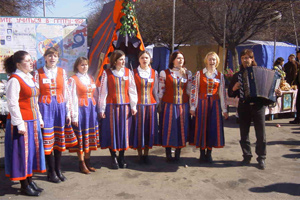Symphony 4: Finale
People didn't like the Fourth Symphony when it was first performed in 1890. A New York Post reviewer wrote, "The Fourth Tchaikovsky Symphony proved to be one of the most thoroughly Russian, i.e. semi-barbaric, compositions ever heard in the city. ... If Tchaikovsky had called his symphony 'A Sleigh Ride Through Siberia' no one would have found this title inappropriate." A reviewer in Germany in 1897 wrote "The composer's twaddle disturbed my mood. The confusion in brass and the abuse of the kettledrums drove me away!"
Another Russian composer, Sergei Taneyve, critized the Fourth Symphony for being programmatic, that is, for having a plot. However, Tchaikovsky didn't agree. "I don't see why you consider this a defect. On the contrary, I should be sorry if symphonies that mean nothing should flow from my pen, consisting solely of a progression of harmonies, rhythms and modulations." He felt his music should mean something.
 This symphony looks at all of live. Sometimes it is very sad and dark, but then we have times of real joy. The orchestra will be playing the fourth movement which portrays a folk-holiday. Tchaikovsky wrote of this movement: “If you find no pleasure in yourself, look about you. Go to the people. See how they can enjoy life and give themselves up entirely to festivity.”
This symphony looks at all of live. Sometimes it is very sad and dark, but then we have times of real joy. The orchestra will be playing the fourth movement which portrays a folk-holiday. Tchaikovsky wrote of this movement: “If you find no pleasure in yourself, look about you. Go to the people. See how they can enjoy life and give themselves up entirely to festivity.”
As you listen to this movement pay attention to the way the melody changes from very fast and loud to a gentle little woodwind tune that is actually the Russian folktune, “In the field there stood a birch tree.”